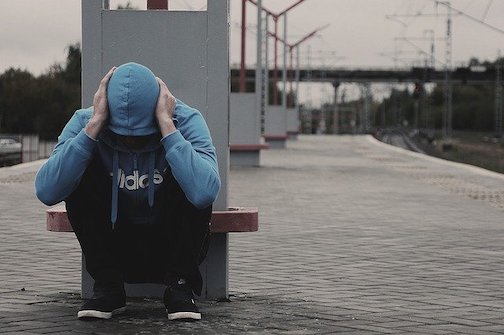June 14, 2021
Do you find yourself anxious or panicked over the fear of the panic?

People who have these attacks tend to become afraid of the panic itself, i.e., they can find themselves in a panic attack from fear of a panic attack. This issue is expressed by Julianne in the follow question:
“I have a question, one that feels quite core to me right now… how do I overcome my fear of panic itself? While I was tuning in and recognizing feelings of fear popping up over social situations, work, travel, I asked myself what I was scared of and it was always “what if I panic?” I assume that’s my wounded self, but my child is quite frightened too… its just such a terrible feeling to panic out of the blue.”
One of my clients shared the following experience she had with her therapist in managing a panic attack:
“One of the things that really helped me was when my therapist actually talked me through a panic attack. Racing thoughts (in my opinion) are a way to stay in your head, not your body. What she did was to have me focus on my BODY, and I described in great detail the sensations that I was feeling. Things like ‘tightness in my chest,’ ‘my legs are really warm,’ ‘my head is pounding,’ etc. Ever since then I have never had a panic attack. I still get anxiety from time to time, but I use that as my cue to focus in my body.”
Why did this help so much?
Because, in focusing in her body, she was able to tolerate and even make friends with all the feelings. Instead of panicking over the panic, she embraced the panic and became very present with it, keeping it company so that her inner child didn’t feel alone with it.
Imagine a small child who is in a department store with her mom and suddenly finds herself alone. She calls for her mom but her mom is nowhere to be found. What this child might feel is panic at being lost, alone and helpless.
This is often what goes on within. When we abandon ourselves, our inner child feels very alone and lost within, especially if something scary has happened or we’ve had a thought that triggers a memory of a past traumatic situation when we felt terrified, alone and helpless.
When you feel anxious or panicked, you might want to imagine that the panicked part of you is a small child who needs to know that he or she is not alone – that you want to be there for your feelings as a loving adult, getting focused in your body with your feelings in Step One of Inner Bonding. This will likely be a huge help to you.
You might need another person to help support you, lovingly guiding you while you are doing this, because sometimes, when the panic hits, it can be hard to access the loving adult part of you.
Embracing the concept of not leaving your feelings alone to fend for themselves might be very helpful.
This is what Step One of Inner Bonding is all about – staying present in your body with your feelings so that you can immediately and lovingly attend to them. This is what I call ‘having your inner baby monitor on.’
It makes it much easier to immediately tend to feelings of panic if you are already connected with yourself than if you are focused in your head. If, the moment you feel the first feeling of anxiety or panic, you immediately breathe into it and embrace it with compassion, holding it with love, you will find that it subsides. Then you can move into Step Two, an intent to learn, to discover what triggered the panic – a scary thought or a situation that triggered trauma. Sometimes what triggers panic is that you are so caught up in your head that your inner child feels abandoned and goes into a panic.
You will see that once you can get present in your body with compassion, you will no longer be stuck in the panic.
Join Dr. Margaret Paul for her 30-Day at-home Course: “Love Yourself: An Inner Bonding Experience to Heal Anxiety, Depression, Shame, Addictions and Relationships.”


 Listen to Dr. Margaret Paul's interview with
Listen to Dr. Margaret Paul's interview with 

